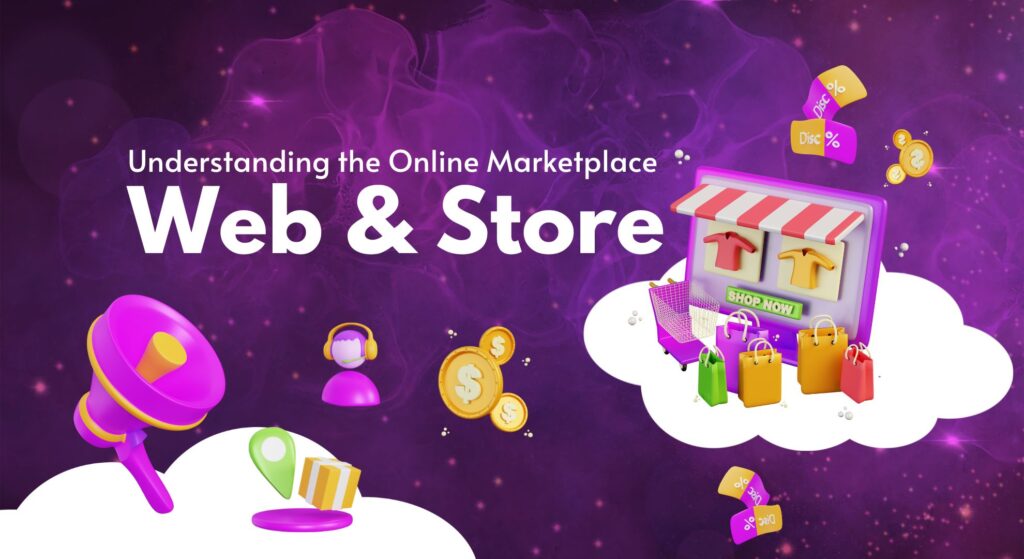In today’s digital world, online shopping is more popular than ever. Many people prefer the convenience of shopping from home rather than visiting physical stores. This article will explore the concept of web stores, their benefits, challenges, and how they fit into our lives. We will answer questions like: What is a web&store? How do they work? What are the pros and cons of shopping online? By the end, you’ll have a clearer understanding of the web store landscape.
What is a Web Store?
A web&store, also known as an online store or e-commerce site, is a website where people can buy products or services. These stores can sell anything from clothes and electronics to groceries and handmade items. Instead of going to a physical location, customers browse the web store, add items to their virtual cart, and check out online.
Web&stores work through a process that includes listing products, managing inventory, and handling payments. They allow businesses to reach a larger audience, as anyone with internet access can shop from anywhere. Many web stores are user-friendly, making it easy for people of all ages to find and purchase items.
How Do Web Stores Work?
Web stores operate using several key components. First, they need a website, which serves as the online storefront. This website includes product listings, descriptions, images, and prices. Customers can navigate through different categories to find what they need.
Once a customer selects an item, they add it to their cart. The cart keeps track of the products they want to buy. When ready to purchase, the customer goes to the checkout page, where they enter their payment information and shipping address. After completing the purchase, the store processes the order and ships the items to the customer.
Behind the scenes, web&store use inventory management systems to keep track of stock levels. They also rely on payment gateways to securely process transactions. These systems work together to create a smooth shopping experience for customers.
Benefits of Shopping Online
Shopping online offers many advantages. First, it provides convenience. Customers can shop anytime, anywhere, without needing to travel to a store. This is especially helpful for busy individuals or those living in remote areas.
Another benefit is the variety of products available. Online stores often have a wider selection than physical stores. Customers can compare prices and find better deals, leading to potential savings. Additionally, online reviews help buyers make informed decisions based on the experiences of others.
Shopping online can also save time. There’s no need to wait in long lines or search through crowded aisles. With a few clicks, customers can find what they want and have it delivered right to their doorstep.
Challenges of Online Shopping
Despite the many benefits, online shopping does come with challenges. One major concern is the inability to physically inspect products before purchasing. Customers may be disappointed if an item does not meet their expectations upon arrival.
Shipping costs can also be a drawback. While some web&store offer free shipping, others may charge high fees, making the final cost higher than expected. Delivery times can vary, and customers may have to wait longer than they would in a physical store.
Security is another issue. Customers need to provide personal information, such as credit card numbers and addresses. If a web store does not have proper security measures in place, this information could be at risk of theft.
How to Choose a Reliable Web Store
With so many web stores available, it’s essential to choose one that is trustworthy. Here are some tips for finding a reliable online store:
- Check Reviews: Look for customer feedback on websites and forums. Positive reviews can indicate a reputable store.
- Verify Security: Ensure the website has secure payment options. Look for “https://” in the URL, which indicates a secure connection.
- Return Policy: Read the store’s return policy before making a purchase. A good policy should allow customers to return items if they are not satisfied.
- Customer Service: Reliable stores should have accessible customer service. Check if they provide contact information and respond to inquiries promptly.
By following these tips, customers can shop more safely and confidently online.
The Future of Web&Stores
The future of web stores looks promising as technology continues to advance. Many businesses are adopting new trends, such as mobile shopping and personalized recommendations. Mobile shopping allows customers to browse and purchase products directly from their smartphones.
Artificial intelligence (AI) is also becoming more common in e-commerce. AI can help analyze customer behavior and suggest products based on preferences. This personalization improves the shopping experience and can lead to increased sales for businesses.
Furthermore, the rise of social media has created new opportunities for web stores. Many companies use platforms like Instagram and Facebook to promote their products and drive traffic to their online stores. In addition to digital marketing, some businesses also offer the option to print flyers online, allowing them to reach both online and offline audiences effectively.
Pros and Cons of Web Stores
Here’s a table summarizing the benefits and challenges of web stores:
| Pros | Cons |
|---|---|
| Convenient shopping experience | Inability to physically inspect items |
| Wide variety of products | Potential shipping costs |
| Time-saving | Security concerns |
| Price comparison | Delivery delays |
| Customer reviews for guidance | Difficulty with returns |
Web stores have transformed the way we shop, offering convenience and a wide range of products. While they come with challenges, understanding how to navigate these can lead to a positive shopping experience. As technology continues to evolve, web stores will likely become even more integral to our daily lives. Whether you’re looking for a new outfit, the latest gadget, or something unique, a web store is just a click away.



